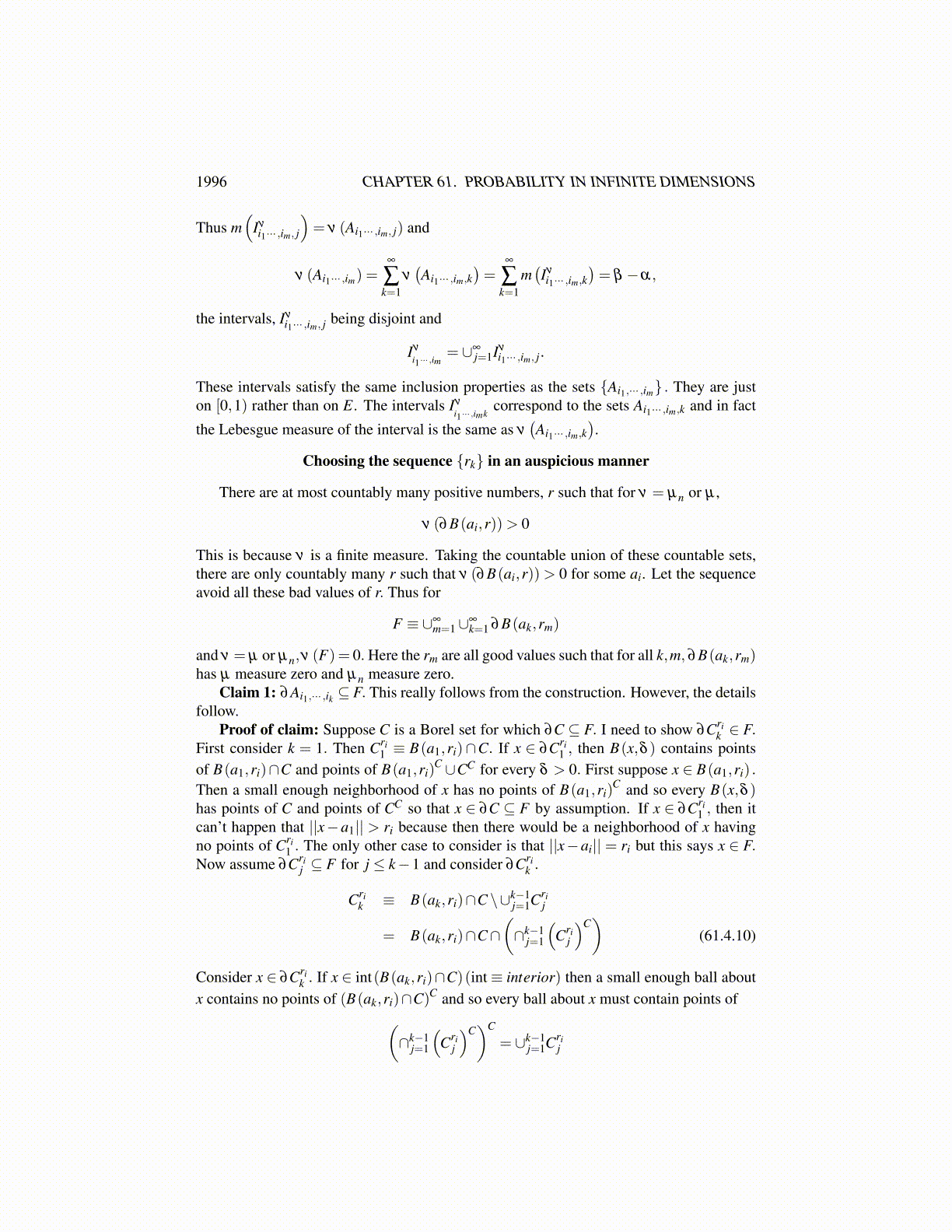
1996 CHAPTER 61. PROBABILITY IN INFINITE DIMENSIONS
Let ε > 0 be given. Then since µ (∂U) = 0, the dominated convergence theorem impliesthere exists ψ = ψk and φ = φ k such that
ε >∫
ψdµ−∫
φdµ
Next use the weak convergence to pick N large enough that if n≥ N,∫ψdµn ≤
∫ψdµ + ε,
∫φdµn ≥
∫φdµ− ε.
Therefore, for n this large,
µ (U) ,µn (U) ∈[∫
φdµ− ε,∫
ψdµ + ε
]and so
|µ (U)−µn (U)|< 3ε.
since ε is arbitrary, this proves the lemma.
Definition 61.4.2 Let (Ω,F ,P) be a probability space and let X : Ω→ E be a randomvariable where here E is some topological space. Then one can define a probability mea-sure, λ X on B (E) as follows:
λ X (F)≡ P([X ∈ F ])
More generally, if µ is a probability measure on B (E) , and X is a random variable definedon a probability space, L (X) = µ means
µ (F)≡ P([X ∈ F ]) .
The following amazing theorem is due to Skorokhod. It starts with a measure, µ onB (E) and produces a random variable, X for which L (X) = µ. It also has something tosay about the convergence of a sequence of such random variables.
Theorem 61.4.3 Let E be a separable complete metric space and let {µn} be a sequence ofBorel probability measures defined on B (E) such that µn converges weakly to µ anotherprobability measure on B (E). Then there exist random variables, Xn,X defined on theprobability space, ([0,1),B ([0,1)) ,m) where m is one dimensional Lebesgue measuresuch that
L (X) = µ, L (Xn) = µn, (61.4.8)
each random variable, X ,Xn is continuous off a set of measure zero, and
Xn (ω)→ X (ω) m a.e.
Proof: Let {ak} be a countable dense subset of E.
Construction of sets in E